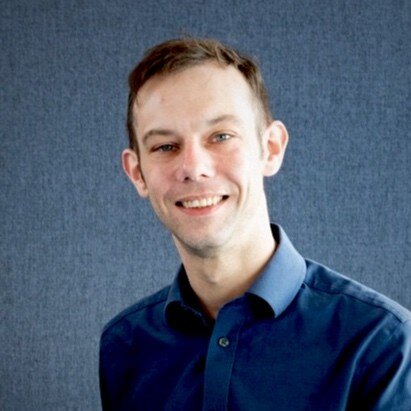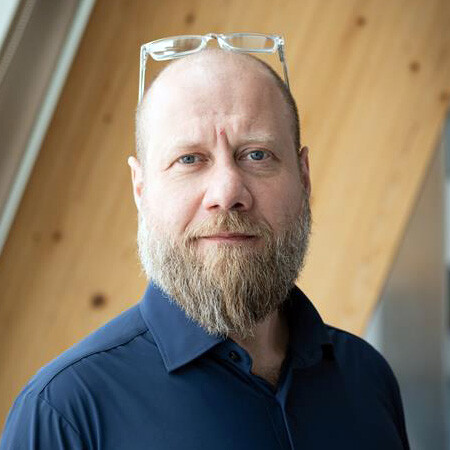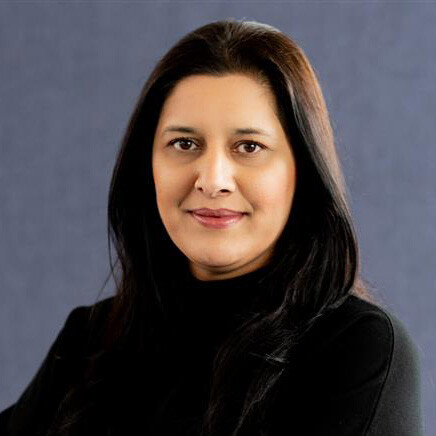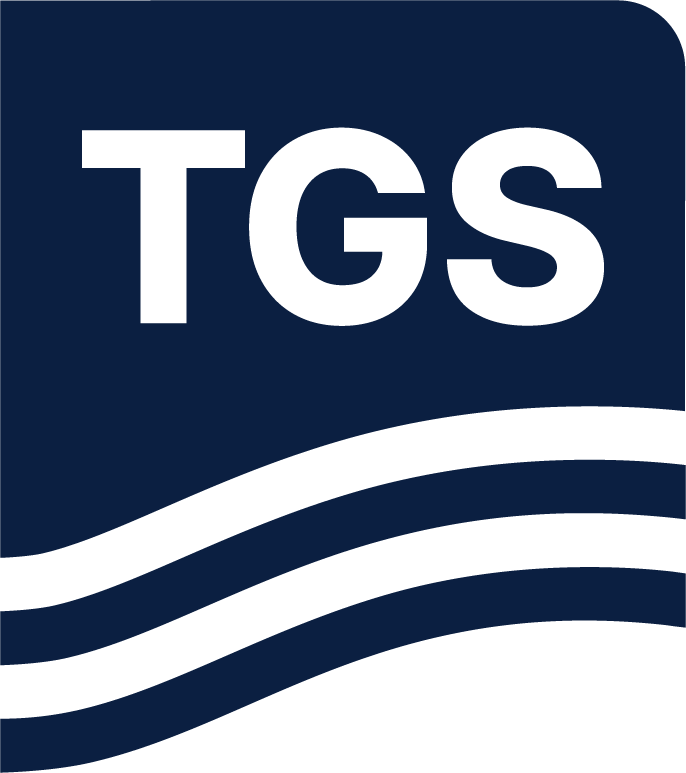Episode Summary
In this episode, host Jamie Bernthal-Hooker is joined by offshore wind transmission and cable experts Rameeza Haq Duggal and Vincenzo Poidomani to discuss the increasing risks and costs of offshore cable failures. They discuss the recent failure of the Estlink 2 subsea cable between Finland and Estonia, the suspected involvement of a shadow fleet and the costly repairs now underway. The conversation also dives into broader industry risks and its estimated costs.
With offshore wind and interconnector projects expanding rapidly, what does the future hold for cable reliability? Tune in for expert insights on one of the sector's most pressing challenges.
Jamie Bernthal-Hooker (00:18)
Hello from TGS 4C Offshore, the market leaders in offshore wind intelligence and a proud part of TGS New Energy Solutions. I'm Jamie Bernthal-Hooker with the market research team. And today I'm joined by two of our experts, Rameeza Haq Duggal and Vincenzo Poidomani. Welcome.
Rameeza Haq Duggal (00:36)
Thanks Jamie. My name is Rameeza Duggal, and I manage offshore transmission and cables and turbine subscriptions at TGS 4C Offshore. I have over five years of experience analyzing the offshore wind market and I specialize in cables, grid infrastructure, interconnectors, turbines as well as vessels that support them.
My work focuses on developing cost models, market intelligence reports, consultancy studies, and with my background in offshore wind market analysis, I am excited to be here today to explore the major challenges and opportunities shaping the offshore transmission and cable reliability.
Vincenzo Poidomani (01:20)
Well, thank you very much for inviting me. My name is Vincenzo Poidomani. I'm the Subsea Engineering Manager for TGS 4C Offshore. Our main focus is interconnectors and in general, Subsea cables. My background is geotechnical engineering. I did lot of years of survey and in the last 15 years I've been involved in subsea power cables.
Jamie Bernthal-Hooker (01:56)
Perfect, thank you. So, two real experts in the room. We're going to talk today about cable failures. Towards the end of 2024, the Estlink 2 subsea cable, which connects the grids of Finland and Estonia, made the headlines for potential sabotage as it experienced an unplanned failure. Attention turned to the possible involvement of a shadow fleet and Estonian and Finnish grid operators, Elering and Fingrid, have now withdrawn their request to seize the vessel Eagle S, which crossed the cable at the time it failed, in part because it's getting too expensive to pursue. Repairing the cable failure will take several months and cost millions.
So, we'll start with you, Rameeza. You head up our transmission and cable products at TGS 4C Offshore. I remember last year you published a report pointing out that cable failures could cost over 60 billion euros over the next decade.
How many cable failures are we looking at?
Rameeza Haq Duggal (02:57)
Yes, that's correct, Jamie. Our analysis estimated around 3600 cable failures in interconnector and offshore wind projects between 2024 and 2035, with potential costs reaching up to around 61.5 billion euros. So here I would like to add that all these failures may not need vessels. Some of them would be less complicated and easier to fix failures.
So, coming back to failures, so far, we have already seen over 80,000 kilometers of cables installed in offshore wind and interconnected projects. with this rapid expansion of these sectors, that number is expected to grow significantly to around 260,000 kilometers by 2035. So naturally, as more cables are installed, the risk of failure increases.
Especially with longer transmission distances, more complex installations and harsher marine environments. and these failures aren't just about repair costs. These also involve extended downtime and lost revenue. For instance, a 700-megawatt interconnector between Norway and the Netherlands failed in 2022 and it took around 134 days to return to operation. So, imagine the revenue loss during these periods. So that's why it's more critical than ever for the industry to focus on better technology, stricter installation techniques, and advanced monitoring and maintenance strategies.
Jamie Bernthal-Hooker (04:45)
I guess for both of you, what are those key causes of cable failures?
Rameeza Haq Duggal (04:50)
So, from our analysis, which is based on data of around 330 cable failures, the leading cause of cable failures is bad installation techniques. For example, there was an expo cable at a UK wind farm and that failure was caused by the over tightening and subsequent loosening of the cable screen clamps during installation.
So, this highlights that how even small errors during installation can lead to a major failure down the line. So, beyond installation issues, would say mechanical issues and external factors such as vessel activity, accidental anchor drops, these are also very significant causes of damages. And then there are design and manufacturing faults. And yes, we can't ignore environmental factors.
In 2021, a part of an interconnector in US was replaced just because it was damaged due to rapid seabed movements and sediment coverage. these cables are constantly exposed to these strong currents and seabed movements and harsh weather. yeah, these are also very important factors. But yeah, if you see from financial perspective, I would say. Like I've seen data from insurance perspective and failures related to cable protection system and manufacturing defects tend to be the most expensive ones. These failures often require full or partial cable or CPS replacement, which leads to prolonged downtime and major revenue losses. So, once again, improving installation standards and monitoring environmental impacts is important.
Vincenzo Poidomani (06:46)
Yes, Rameeza, you're perfectly correct and I do agree with what you identified as major causes. What I would like to add is the fact that it's important to have a good engineering process, especially related to the protection of the cable.
And in particular, burying the cable is considered the most successful protection methodology. The engineering from the concept moment is fundamental to be kind of carried out in the best manner as possible with the team of experts in subsea cable engineering. So, one other aspect that I would like to enforce is the manufacturing and all the handling of the power cables, that in some of the projects where we have been involved, we experienced several kinds of faults, just related to manufacturing issues. The interaction with the cable and the burial tools can create, can damage the cable, create point loads on the cable and further down the line, the cable may fail for that specific reason.
Jamie Bernthal-Hooker (08:37)
Great. There are so many parts, so many different things involved. That means there's so much that can go wrong.
Vincenzo Poidomani (08:45)
Yeah, correct. Definitely.
Jamie Bernthal-Hooker (08:47)
When we talk about cable failures in general, you hear a lot about national security. How big an issue is security?
Rameeza Haq Duggal (08:58)
It is becoming an increasingly critical issue when it comes to cable failures, especially in the context of geopolitical tensions. Our prime example is the recent Estlink 2 failure where a country's involvement has been suspected. And it's not just about power cables, it's about fiber optic cables and gas pipelines. We have seen so many incidents in the past year alone.
A fiber optic cable failed between Finland and Germany and around the same time, another fiber optic failed between Lithuania and Sweden. And then back in 2023, a natural gas pipeline between Finland and Estonia suffered severe damage. And later the Finnish government stated that the damage was caused by a Chinese container ship dragging its anchor. However, it is important, but I think it is equally important to take a careful, measured view on this issue. While there are increasing concerns about security risks to cables, but if we look at historical failure data for power cables especially, very few cases have been confirmed as deliberate attacks due to geopolitical issues. In many cases, anchor damage is already a well-known risk.
So, it's crucial not to immediately frame every failure as a security threat without a thorough root cause analysis.
Vincenzo Poidomani (10:31)
No, yeah, I completely agree with what you're saying. And for each cable failure, an investigation is needed and needs to be determined what is the cause. And that is beneficial also for the project in order to improve reliability on the system.
Jamie Bernthal-Hooker (10:59)
Are we seeing those improvements happen? How well prepared is the industry to respond to large failures or something more sinister? Do we need more intervention from governments?
Vincenzo Poidomani (11:13)
the power cable industry is now responding to cable failure with ad-hoc intervention. So, there is not actually a plan that involve the government or other entities to allow for an immediate intervention.
This is not the case for the telecom cable industry, where in reality we do have an intervention plan with vessels on standby in different areas where the cables are laid. I mean, it would be ideal to have the same approach for the power cables, but unfortunately, there are technical limitations that are not allowing at the moment this type of approach. The main limitations are the diversity of the type of cables. While, for example, in the telecom cables, they are fairly standardized, and the diversity also in the type of jointing solutions for the power cables.
So generally, at the moment we have technical limitations that are not allowing an approach like an emergency repair approach that can be deployed immediately. Normally if you have a repair you, as a developer, will have some spare cable and some joints, but you will need to wait for the vessel and the team of jointers to be available and so forth. And that is the reason why you normally end up, as Rameeza was explaining before, with reasonably long length of time for the cable to be repaired. So, there is a lot of work, and I believe that all the various stakeholders should get together and try to push forward a solution that can be beneficial for all parties involved.
Rameeza Haq Duggal (14:05)
Here I would like to add something beyond operational and technical challenges. I would say that government can definitely intervene in the financial implications which are a growing concern. Like Jamie mentioned in the beginning that for Estlink 2, both the TSOs, Elering and Fingrid seized the vessel Eagle S which caused the cable damage, but they had to withdraw from it because of excessive costs. now they will bear the cost of all the repair and this whole legal process could take around five to six years. So, government can definitely intervene by reducing this process and by providing some sort of financial support here to both the developers and this case definitely highlights the complexity of maritime liability and the financial burden placed on operators when seeking compensation for infrastructure damage. So, government must intervene here.
Jamie Bernthal-Hooker (15:17)
You mentioned Estlink 2, that was far from the first cable to fail. Learning from failure is a big part of any infrastructure industry. What are the lessons learnt from past failures?
Vincenzo Poidomani (15:28)
The lessons learned are many. Spanning from the manufacturing process, the cable handling, the storage of the cable, to then go into the detail of the protection of the cable. A few years ago, there was a lot of interest on the cable bury risk assessment.
Now that is become like a standard, most of the DSOs, for example, are undertaking a cable burial risk assessment. These normally give us a good understanding of the risk on a cable from a shipping and navigation point of view. So, in that way, we will be able to reduce the failure due to anchor strike and fishing activities. Burying the cable to the right depth depending on the risk and the type of material that we are intersecting while installing the cable.
From a manufacturing point of view, and cable handling and that is reasonably difficult to control. But I believe that once we are kind of starting a project of this size and that the inter-connected projects or even the export cable projects, they have a lifespan that is 40, 50 years from the installation. To get to the installation phase and the operation phase, we normally consider seven to 10 years. So, it is important for me that the technical team that is supporting the TSOs or is part of the TSOs does remain the same for all the installation phase at least. That is important to give continuity and to avoid losing information during the feasibility to installation phase.
Another aspect is the quality control in all the manufacturing and the cable delivery onto the project. Normally there are spot checks, but you go through procedures and so on and forth, but those are... it's important that the procedures of the producer are properly followed and checked and audited. So, those kind of QC aspects are very, important and sometimes they are not as weighted as they should be.
One additional or last, if you wish, aspect that needs planning and good grade of engineering is also the operational maintenance strategy. Once the cable is installed, then you have to have in place an operational maintenance strategy. This for two reasons.
One is you want to be sure that your cable is protected correctly along the lifespan of the cables that we normally consider 40 - 50 years. The other aspect is you want to optimize the cost of the operational maintenance strategy that you are applying to your asset. So, a risk-based approach will allow to kind of reduce the risk of damages of the cable and cable failure and reduce the amount of costs that you are sustaining for maintaining during the operation phase of your cable. So hopefully that covered your question...
Jamie Bernthal-Hooker (20:33)
I think definitely lessons learned – that we cannot afford to cut corners in this. Wow, it's been so good to talk about the advances that are happening and to be thinking about how far there still is to go. We often say here that data is what drives innovation. So, it's been really rewarding to chat with you both about what's going on, what it means, what's coming. We're nearly out of time, but I have just time for one quick fire question to each of you.
We'll start with Rameeza and then go to Vincenzo. So, the question is this, what is the most exciting thing to you about the cable industry at the moment?
Rameeza Haq Duggal (21:15)
Well, there is a lot to be excited about in the subsea power cables industry right now. Firstly, the scale of upcoming projects is unprecedented. We are seeing major developments like North Sea energy islands, floating wind farms, multi gigawatt interconnectors, and then multi-purpose interconnectors, all of which are driving massive growth.
This is a transformative period that will shape the energy landscape for years. So, on the technology side, advancement in HD3D cables and dynamic cables for floating wind are really changing the game. At the same time, we are seeing a huge ramp up in infrastructure, like new cable manufacturing facilities have been built almost everywhere.
New cable installation vessels are under construction, and everything is moving at an incredibly fast pace. It's a really exciting time for the industry and it's great to see this momentum building.
Vincenzo Poidomani (22:23)
Yes, correct. It's absolutely incredible the dimension of the industry and the growth that we are experiencing. I completely agree with you, Rameeza. For me, the most exciting thing at the moment is that we are involved in projects that are enormous. So, we are looking now to connect countries that generally years ago was only possible for telecom cables. now we are looking to scale the interconnection to such a dimension that is actually impressive.
That's the thing that makes me… surprises me every day when I start my day and start working on these incredible long interconnectors.
Jamie Bernthal-Hooker (23:36)
That's great. I think the enthusiasm is something that keeps us going whatever we're related to this industry. And there's always so much to be enthusiastic about so much coming up and on the horizon. It's been great. Thank you both. So great to chat.
Vincenzo Poidomani (23:53)
Thank you, Jamie.
Rameeza Haq Duggal (23:55)
Thank you so much.
Jamie Bernthal-Hooker (23:57)
And thank you for joining us today at PowerPod by TGS. Make sure to subscribe to our podcast and join us next time as we continue this conversation around new energy solutions. See you on the next episode. Bye.
The Host

Jamie Bernthal-Hooker
Research Team Manager, 4CO Products
Tel: +44 1502 307037
jamie.bernthal-hooker@tgs.com
Featured Guests



